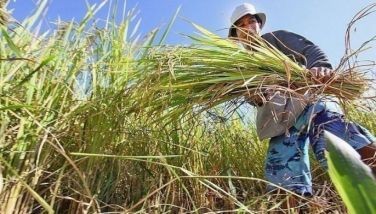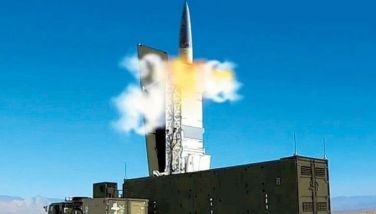Commercial production of sea cucumbers now possible
DAGUPAN CITY, Philippines – They are over exploited in the wild due to high demand from consumers for their reported medical, pharmaceutical, gastronomical and commercial use.
Now, sea cucumber (Holothuria scabra) culture in hatcheries at the Bureau of Fisheries and Aquatic Resources (BFAR) center is bearing fruit as researchers experimenting on this fishery resource are finally able to produce this high-value species in commercial quantity.
Dr. Westly Rosario, BFAR center chief, reported their success to The STAR recently.
According to Dr. Rosario, BFAR first ventured into a partnership with the World Fish and the University of the Philippines Marine Science Institute in 2007.
The collaboration, however, was halted for some time until they resumed the breeding in hatcheries which produced encouraging results.
An international summit was also held here with foreign experts from countries popularly producing sea cucumber like Indonesia, Thailand, Australia and Vietnam, invited to share their knowledge about it.
The research team continued working on sea cucumber until this month. They were able to prove the production of sea cucumbers on a commercial scale could be done.
Dr. Rosario admitted that the survival rate of sea cucumber is very low at about four percent only.
However, he said that there are distinct characteristics for certain places that make it ideal to produce sea cucumber, so one has to find the best technique suitable for a certain place.
“Now we are able to produce for commercial (production). The size is good because we have attained the three-grammer size and we are more confident in raising it in different stages,” he said.
“So technically we are ready, but we can still expand next year,” he added.
Raising sea cucumbers in hatcheries in 50 to 60 days could produce the three-grammer size, Dr. Rosario said.
Dried sea cucumbers command a very good export price of P4,500 per kilo.
Sea cucumbers, mostly from the wild, are one of the country’s top 10 exports, he said.
Unfortunately, Dr. Rosario said, the population from the wild is fast depleting due to over extraction.
Aside from its consumption as food in Asian countries, sea cucumber also has several other uses like pharmaceutical and demand is very high.
Dr. Rosario said one problem they saw last year showed the processing of sea cucumbers remains very crude.
Collectors of sea cucumbers are at a disadvantage because there is no technology on how to properly process the product before these are sold, he said.
“In any aquaculture technology, one major factor is the availability of seeds to use so that is our utmost concern that we solved,” he said.
Sea cucumbers, although a high-value species, basically feeds on wastes, he said. High saline rivers could be cleansed by this bottom-dweller species, like oysters, he said.
“They are of big help in solving our problem on pollution in mariculture parks,” he said.
It could also be helpful in aquaculture. In other countries like Vietnam, sea cucumbers are used in shrimp farms. It could be used for polyculture or alternate with shrimp.
They are easy to manage because they are almost sedentary and could be transferred from one pond to another, Dr. Rosario said.
They could also be used for sea ranching purposes where they could be grown in hatcheries and organized fishermen would release them in the wild.
When they reach their sexual maturity size of 250 to 300 grams, they could harvest them, he added.
The BFAR center in Brgy. Bonuan Binloc has its own facility devoted solely to sea cucumbers.
Next year, they plan to scale up their production as they have already adopted the right technology, Dr. Rosario said.
- Latest





























